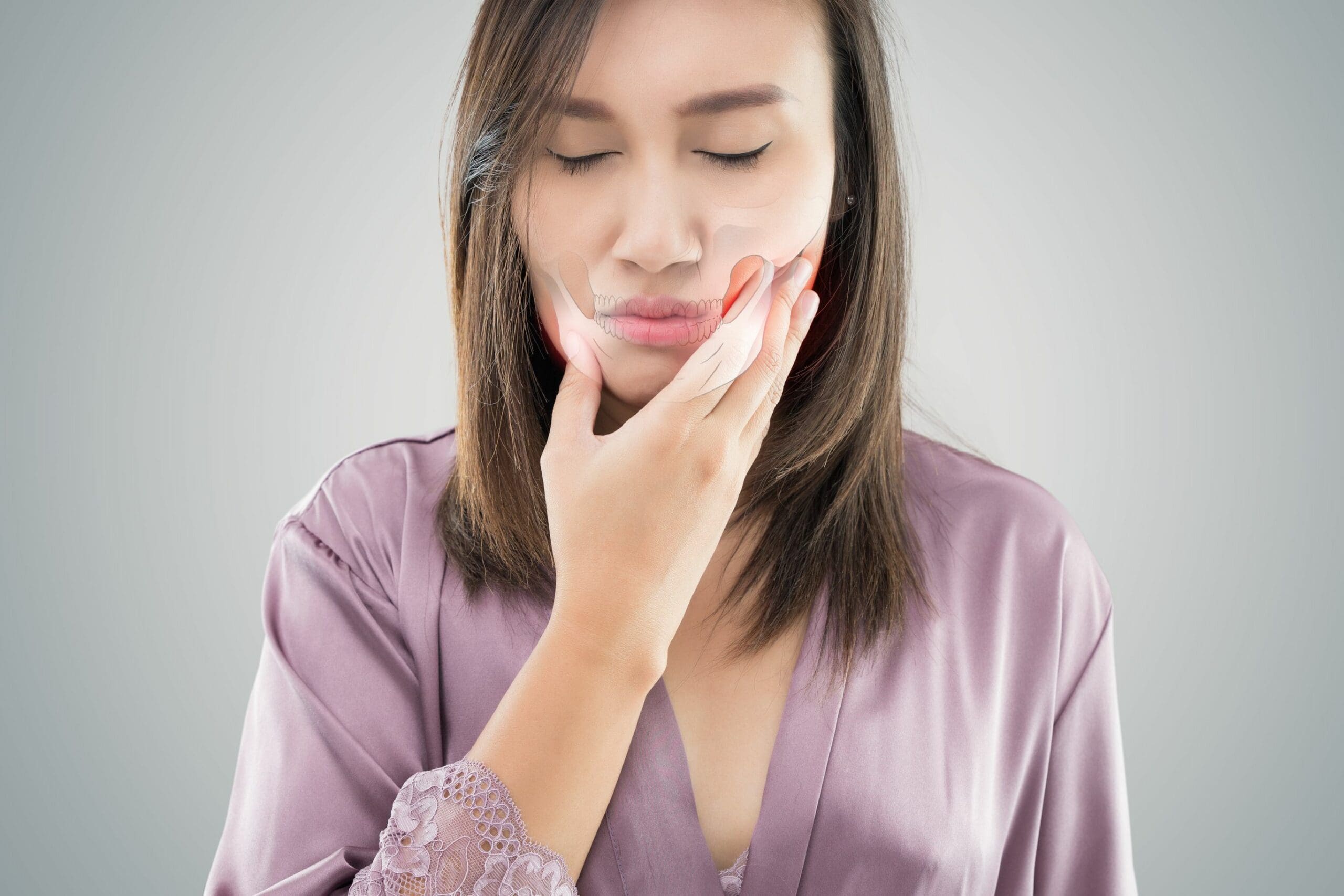Temporomandibular disorders (TMDs) are a group of over 30 jaw conditions that cause severe pain and dysfunction in the jaw joint and muscles that control jaw movement. If your orofacial pain specialist or dentist is using the term “TMD” they are typically referring to a disorder, whereas using the term “TMJ” refers more specifically to the temporomandibular joint itself.
People actually have two TMJs; one on each side of the jaw. It helps to first understand the Temporomandibular Joint
The TMJ is a small and fragile joint. It is located next to each of your ears and connects your jaw to your skull, this complex arrangement allows you to open your mouth, chew, and speak without pain or effort. Because it’s so small and delicate, if this joint that is prone to becoming damaged, inflamed or irritated, it can be very painful. You need it to be operating smoothly.
Due to a lack of common terminology used among dental practitioners and clinics, articles exist using the term “TMJ Disorders”. People, even dentists, might call this a “TMJ Disorder” because of its relationship to the TMJ joint. However, this creates confusion, it’s best to separate these two terms and refer to the health condition as “TMD” or “TMJD.”
3 Types of TMJD
1. Internal Derangement of a Person’s Jaw Joint
A dislocated jaw, displaced TMJ disc or injury to the lower jaw can result in TMJ disorders or a TMD. This is a structural issue versus a muscular problem. It generally involves symptoms of progressive slipping or displacement of a person’s articular disc within the temporomandibular joint.
2. A Degenerative Jaw Joint Disease
When a person overuses their jaw joint, for example, by repeated chewing on ice, the joint is more prone to degenerating over time. Also, aging of the joint can prompt unwanted degeneration and/or inflammation. This is commonly the result of osteoarthritis, rheumatoid arthritis or a damaged TMJ disc.
3. A Myofascial Pain Disorder
When severe and persistent pain and discomfort occurs in the muscles surrounding the jaw joint, it may have advanced into a TMJ disorder or TMD. The accompanying acute pain is often the result of abnormal muscular function due to daytime clenching or nocturnal teeth grinding. We refer to this as bruxism.
By getting your jaw pain diagnosed and treated early on, you have better changes of gaining the best outcome. Those who delay getting professional help more often become patients with one or more painful conditions at the same time.
What is the Nature of a TMD?
Many TMDs come and go after only a short duration. A persistent disorder is when they do not go away on their own. Then they are considered chronic, or long lasting. Complications and symptoms can multiply with a correct diagnosis and treatment. TMDs can occur alone or simultaneously along with other medical conditions such as arthritis, headaches, back pain, sleep apnea, fibromyalgia, and irritable bowel syndrome.
It is quite common. Studies report that nearly 11-12 million adults in the United States had pain in the region of the temporomandibular joint.
Additionally, they have found that temporomandibular disorders are twice as common in women than in men, especially in women between 35 and 44 years old. Some believe that this is because osteoporosis may begin that early and is more common among women. Any weakening of the jawbone may increase your chances of TMD.
A Severe TMD Disorder May Require Implants
Most often physical therapy, stretching exercises, wearing an oral device or other conservative treatments are all that is needed. When these fail, implants or artificial devices that are used to replace part of the jaw joint or the entire joint may be recommended.
Temporomandibular implants approved by the FDA that may be useful when:
- There is a sustained injury to the jaw joint.
- A person is born with a congenital condition that this repair is likely to help resolve.
- The jaw joint is prolonged in a frozen state due to an injury or infection.
- There’s severe damage to the temporomandibular (tem-puh-roe-man-DIB-u-lur) joint.
- The pain will not go away with less invasive treatments.
- All simpler treatments have already been uses and have failed to resolve the symptoms.
How is TMD Formally Classified?
The National Institute of Dental and Craniofacial Research and John Hopkins Medicine identify TMD by the following:
- Myofascial pain. This is the most common form of TMD. It results in discomfort or pain in the fascia (connective tissue covering the muscles) and muscles that control jaw, neck and shoulder function.
- Internal derangement of the joint.This means a dislocated jaw or displaced disk, (cushion of cartilage between the head of the jaw bone and the skull), or injury to the condyle (the rounded end of the jaw bone that articulates with the temporal skull bone).
- Degenerative joint disease. This includes osteoarthritis or rheumatoid arthritis in the jaw joint.
Understandably, with all that is published mixing the terms “TMJ” and “TMD”, understanding the difference can be confusing. We all acknowledge that they refer to different — though related — entities.
“TMJ” refers to the temporomandibular joint, a hinge-like joint that connects your lower jaw to your skull. “TMD” is a condition that affects the TMJ, and it stands for temporomandibular joint disorder.
TMD occurs when there’s notable damage to your TMJ. It typically results in severe symptoms of persistent pain, discomfort, and inflammation.
To Summarize
Don’t put off speaking with your orofacial pain specialist, dentist, or primary care professional if you think you have TMD. Dentists most often diagnose and treat TMD but many lack sufficient training. As of today, it still is not offered in most dental trainings. We recommend requesting that your dentist or general practitioner refer you to an orofacial pain specialist.
Many treatment options can help you find relief from this condition and outcomes are consistently better with immediate treatment. If you have a misaligned bite (for example, underbite or overbite) or persistent anxiety and stress that cause you to grind your teeth, take action before it advances.
If you’re experiencing a TMJ disorder, you need help to treat your pain and jaw dysfunction and restore your bite. You may call the Minnesota Head and Neck Pain Clinic to gain more answers and care. (763) 577-2484



